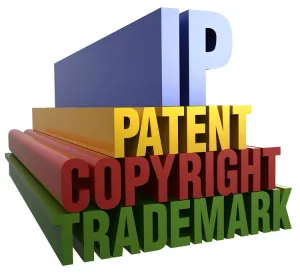On January 21 and 22, 2020, the 8th annual McDermott International Seminars took place in Osaka and Tokyo. These seminars focused on cross-border M&A, GDPR, intellectual property, global enforcement, and other key topics. Lawyers from McDermott’s US and European offices, including Washington, DC; Chicago; New York; Paris; London; Brussels; and Munich, discussed these topics with Japanese companies operating globally. During the International Seminars, the Intellectual Property team discussed insights around emerging technologies and intellectual property.
What follows are key takeaways from the IP session of the seminar. See highlights from the full Seminar.
Technology Trends for 2020
Speakers revealed that technology trends in 2020 are likely to increase among six key areas: Artificial Intelligence, IoT, 5G, Autonomous Driving, Blockchain, and Personalized Medicine.
With respect to AI, the number of patent applications has increased exponentially in the past decade, and AI applications are showing up across a wide range of industries—including telecommunication, transportation, personal devices, and life sciences. The top filers in the AI space include IBM, Microsoft, Toshiba, Samsung, NEC, Fujitsu, Hitachi, and Panasonic.
In autonomous driving, as well as in other connected technologies, it is critical to protect core technology, applications, and devices under patent law. However, questions remain on how to protect the enabling technology (i.e., the software and technology around IoT):
-
Patent protection of software is difficult. Protection is available for algorithms and methods underlying the programs that have an “inventive step” over the prior art – one that is found based only on features that “contribute” to the technical character.
-
In the US, considerations are assessed as matter of patent eligibility in two-part Alice
-
There is a new subsection in the Guidelines for Examination of the European Patent Office discussing patentability of autonomous-driving software
Best practices to consider when managing IP in the world of IoT include:
-
Monitoring inside and outside the industry
-
Developing a solid patent portfolio and doing so quickly
-
Staying ahead of industry standards
-
Considering patent monetization as a method to drive value to bottom line in increasingly hyper-competitive market
Protection of inventions should also include consideration of tradeoffs between patents and trade secret protection. We outline some of those considerations below.
|
Comparison |
Patent |
Trade Secret |
|
What does it protect? |
Covers new, useful inventions |
Covers valuable, secret information |
|
How does it protect my IP? |
Gives you the right to exclude others from making, selling, using, importing |
Protects only against “misappropriation“ |
|
What must you disclose? |
Invention becomes public |
Information remains secret |
|
How do you get it? |
Formal application, examination by patent office |
No application or registration required |
|
How long before it takes effect? |
30 to 36 months, on average |
As long as it takes to establish and maintain internal procedures |
|
How long is it valid? |
10/20-year term |
Potentially perpetual |
|
How much does it cost? |
Between USD 10,000 to USD 50,000 |
No application fees, only administrative costs for establishing internal procedures and staffing |
What About Licensing?
In the age of IoT, inbound-licensing will become a substantial problem, as many standards such as 3G/4G/5G, 802.11p or HEVC are highly patented.
There may be a potential trend toward smart licensing:
-
Licensing companies acquire technology licenses, which they sub-license to technology companies and their supply chains in a single transaction (one-stop marketplace).
-
Participation not mandatory, but with more and more companies joining, less transaction costs and less hold-up.
-
AVANCI as an example for the automotive industries: Their share of declared SEP families as to 3G, 4G and (likely) 5G is about 50%.
Companies should make sure they have effective indemnification provisions in the agreements with their suppliers.
Litigation
Litigation issues in the world of IoT encompass everything from data ownership, to data privacy and security, to IP, to ethical considerations. Best practices for avoiding or minimizing liability include understanding the data pathway, considering consumer privacy laws (including the CCPA, effective 1/1/2020), and the different treatment for internal vs external data.
The IoT infrastructure is incredibly complex. Here is a landscape view of some of the dozens of industries and sectors and thousands of companies involved in IoT:

Turck, Matt, A Turbulent Year: The 2019 Data & AI Landscape (2019)




 />i
/>i
